By Dr. Ileana Johnson Paugh ——Bio and Archives--October 10, 2011
Cover Story | CFP Comments | Reader Friendly | Subscribe | Email Us
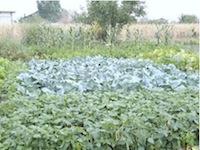 Villagers never had an easy life in Eastern Europe. They had to labor for the communist party under ridiculous quotas every season. None of these apparatchiks knew how to run a farm yet they pretended to be experts at everything.
Field production often fell short of the unreasonable expectations and centralized five-year plans; bad weather, floods, unexpected freeze, drought, and insect invasions added misery to the villagers’ tiny share of the crops after CAPs (Agricultural Cooperatives of Production) got their share. It was not enough to feed a family.
Villagers never had an easy life in Eastern Europe. They had to labor for the communist party under ridiculous quotas every season. None of these apparatchiks knew how to run a farm yet they pretended to be experts at everything.
Field production often fell short of the unreasonable expectations and centralized five-year plans; bad weather, floods, unexpected freeze, drought, and insect invasions added misery to the villagers’ tiny share of the crops after CAPs (Agricultural Cooperatives of Production) got their share. It was not enough to feed a family.
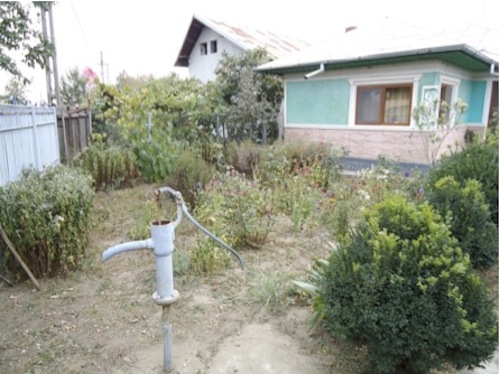 A hand water pump left since my childhood.
No running water or indoor plumbing was available unless individuals could afford to install septic tanks. Outhouses were still visible in many yards and so were hand water pumps. It surprised my husband that people could build nice, multi-story homes sometimes with complete bathrooms but no running water.
A hand water pump left since my childhood.
No running water or indoor plumbing was available unless individuals could afford to install septic tanks. Outhouses were still visible in many yards and so were hand water pumps. It surprised my husband that people could build nice, multi-story homes sometimes with complete bathrooms but no running water.
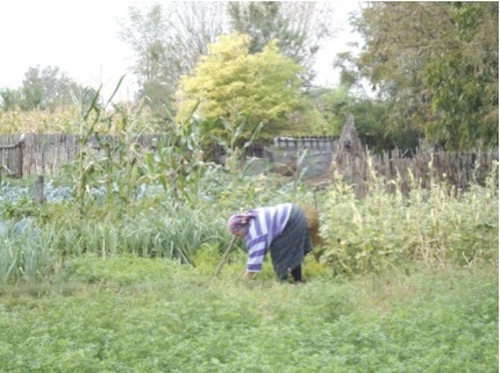 A neighbor was toiling in her potato field
A neighbor was toiling in her potato field
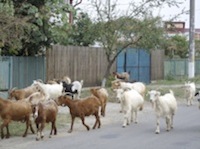 Goats in the village
Goats in the village
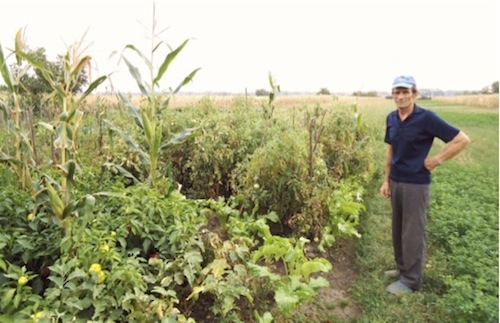 77-year old uncle is showing his garden
It was harvest time for many vegetables and fruits, red peppers, green bell pepper, potatoes, corn, grapes, plums, tomatoes, and apples. There was a distinctive smell in the air of wet fertile soil, freshly mowed grass, and natural fertilizer. Nobody used pesticides and the fertilizer came from the many farm animals, goats, cows, chicken, and pigs.
The main transport to the market inside the village, and to and from other villages was the horse pulled wagon, adapted to the asphalted roads with comfortable car tires. These were the Cadillacs of UN Agenda 21 transportation platform, no fossil fuels needed.
People were riding bikes everywhere and walking. It was not uncommon to see people in the middle of nowhere between villages, walking for miles to get where they needed to go. We had to be extra careful at night as people wore dark clothing and rode bikes without reflective patches or warning lights.
77-year old uncle is showing his garden
It was harvest time for many vegetables and fruits, red peppers, green bell pepper, potatoes, corn, grapes, plums, tomatoes, and apples. There was a distinctive smell in the air of wet fertile soil, freshly mowed grass, and natural fertilizer. Nobody used pesticides and the fertilizer came from the many farm animals, goats, cows, chicken, and pigs.
The main transport to the market inside the village, and to and from other villages was the horse pulled wagon, adapted to the asphalted roads with comfortable car tires. These were the Cadillacs of UN Agenda 21 transportation platform, no fossil fuels needed.
People were riding bikes everywhere and walking. It was not uncommon to see people in the middle of nowhere between villages, walking for miles to get where they needed to go. We had to be extra careful at night as people wore dark clothing and rode bikes without reflective patches or warning lights.
 This cart will be filled to the brim with corn
This cart will be filled to the brim with corn
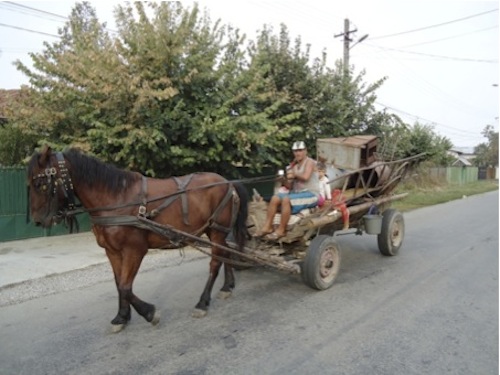 A villager is carrying scrap metal to recycling
Most homes used vines for natural shade and made wine from grapes for personal consumption and the market.
A villager is carrying scrap metal to recycling
Most homes used vines for natural shade and made wine from grapes for personal consumption and the market.
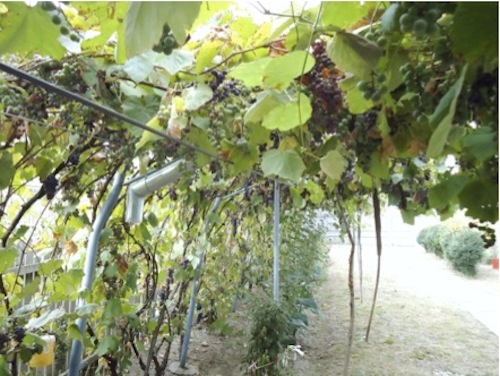 My aunt’s harvest of grapes
Villages in general have improved, with new schoolhouses, churches, amenities such as garbage pickup, electricity, technology, small grocery stores, the possibility of more development and growth, but still a poor place left behind on purpose by more than forty years of communist dictatorship, economic exploitation, and dependence on Marxist ideology.
My aunt’s harvest of grapes
Villages in general have improved, with new schoolhouses, churches, amenities such as garbage pickup, electricity, technology, small grocery stores, the possibility of more development and growth, but still a poor place left behind on purpose by more than forty years of communist dictatorship, economic exploitation, and dependence on Marxist ideology.
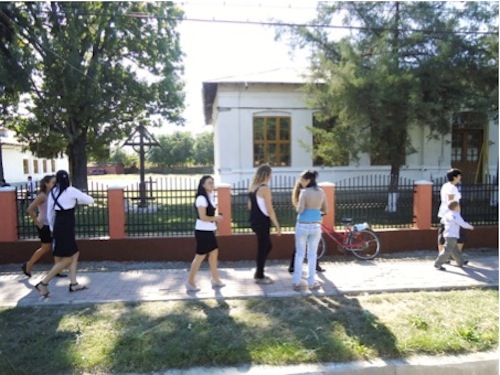 The first day of school
The ruling regime elites served themselves and robbed the country blind initially at gunpoint, while claiming their intent to defend the rights of the proletariat against the bourgeoisie. It was all a lie that enslaved and numbed the population into seething submission for over forty years.
Marxists pretended to pay citizens and the citizens pretended to work. It was not work ethic; it was a symbiotic relationship of poverty and failure, with no incentive for individual creativity and freedom. Fortunately, the Iron Curtain dropped its chains and the population woke up. They never intend to fall prey again.
The first day of school
The ruling regime elites served themselves and robbed the country blind initially at gunpoint, while claiming their intent to defend the rights of the proletariat against the bourgeoisie. It was all a lie that enslaved and numbed the population into seething submission for over forty years.
Marxists pretended to pay citizens and the citizens pretended to work. It was not work ethic; it was a symbiotic relationship of poverty and failure, with no incentive for individual creativity and freedom. Fortunately, the Iron Curtain dropped its chains and the population woke up. They never intend to fall prey again.View Comments
Dr. Ileana Johnson Paugh, Ileana Writes is a freelance writer, author, radio commentator, and speaker. Her books, “Echoes of Communism”, “Liberty on Life Support” and “U.N. Agenda 21: Environmental Piracy,” “Communism 2.0: 25 Years Later” are available at Amazon in paperback and Kindle.